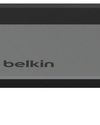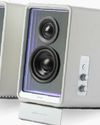As more products are getting homeKitfriendly, here’s how to set things up

Every manufacturer worth its salt seems to create its own unique way of addressing its own cabal of smart kit, whether it makes sense to do so or not. We’re given an unending stream of apps, each of which works slightly differently from the other. Apple’s HomeKit tech (which debuted in iOS 8) and companion Home app (iOS 10) are, in many ways, a solution to that mess, specifically made for Apple device owners.
It’s a consistent way for a wide range of smart kit to connect to a single common ecosystem. HomeKit compatibility means multiple accessories from multiple manufacturers can be administered in one place, while still being accessible from their usual control apps. That could mean Apple’s own Home app, recently ported to macOS Mojave, or a third-party app like Eve for HomeKit or HomeRun for Apple Watch. Setting up a network of HomeKit accessories means your smart home is controllable with Siri, too.
HomeKit also allows you to cook up a certain degree of interaction between those devices that wasn’t there before. A HomeKit-compatible motion sensor from one manufacturer can trigger a light from another. A light being switched on can cause a whole host of other lights to activate at the same time. A HomeKit door sensor, opened at a certain time of day, can switch off your heating, trigger a fan, and send a push notification to your phone or watch. It’s up to you – and HomeKit acts far faster than some other smart automation systems.
This story is from the March 2019 edition of MacFormat UK.
Start your 7-day Magzter GOLD free trial to access thousands of curated premium stories, and 8,500+ magazines and newspapers.
Already a subscriber ? Sign In
This story is from the March 2019 edition of MacFormat UK.
Start your 7-day Magzter GOLD free trial to access thousands of curated premium stories, and 8,500+ magazines and newspapers.
Already a subscriber? Sign In

Baldur's Gate 3
An all-time Mac classic that offers dungeons and dragons gameplay

Belkin Connect 11-in-1 Pro Dock
Unusual laptop dock with VGA support for older displays

Creative Aurvana Ace 2
Creative's latest earbuds introduce a brand new audio tech

Edifier QR65
Take yourself back to high-resolution, true stereo audio

Netgear Orbi 970
Get ready for a Wi-Fi 7 future with this premium mesh system

Gaming on the Mac
Apple silicon and the Vision Pro mean that Apple is finally getting serious about playing games

Perfect your portraits
Discover how to shoot better people pictures in a range locations

Give it your best shot
Take amazing photos on your iPhone - we show you how

OLED displays
The OLED display in the new iPad Pro is a great leap forward

Use your Mac's 2FA features
Learn how to create one-time passwords in Safari and System Settings